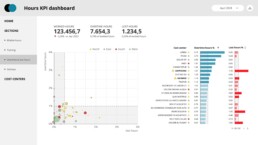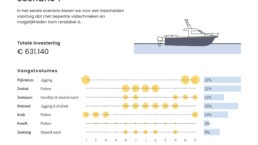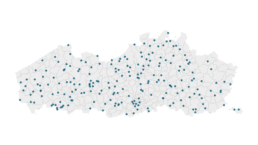How to create a graphical abstract
Graphical abstracts are becoming more and more important. Journal publishers such as Elsevier encourage you to create a concise visual summary of the main findings of your research.
But where to start? What steps should you follow to create the perfect graphical abstract for your article? What tools can you use?
On this page, you’ll find an overview of tips, tools and inspiration to create your own graphical abstract for your next article. Let’s show the world what your research is all about!
Digital tools to create graphical abstracts
You can use almost any graphical tool you want to create a graphical abstract. You could even use just pen and paper, if you like – the story is the most important part of the visual, not the artistic quality. Use the tool you know best, or feel the most comfortable with!
Here is a list of tools to get you started:
- Adobe Illustrator: adobe.com
- Affinity Designer: affinity.serif.com
- BioRender (for life sciences): biorender.com
- Canva: canva.com
- Diagrams: diagrams.net
- Infogram: infogram.com
- Microsoft PowerPoint
- Paint.NET: getpaint.net
- Piktochart: piktochart.com
- Venngage Infographic maker
- Whimsical: whimsical.com
Illustrations and icons to use in infographics
- Figshare (plants and more, for biologists): figshare.com/authors/Plant_Illustrations
- Freepik: freepik.com
- SMART (life sciences): smart.servier.com
- The noun project (icons): thenounproject.com
Photos to use in graphical abstracts
- Burst: burst.shopify.com
- Cathopic (catholic pictures): cathopic.com
- Flickr: flickr.com/
- Picography: picography.co
- Pixabay: pixabay.com
- Reshot: reshot.com
- Unsplash: unsplash.com
- Visual Hunt: visualhunt.com
Color schemes for graphical abstracts
- Adobe Color CC: color.adobe.com
- Coolors.co: coolors.co
- Pictaculous: digitalinspiration.com/color-palette-generator
- Website color schemes: canva.com/learn/website-color-schemes
- 100 brilliant color combinations: canva.com/learn/100-color-combinations
Creating graphs and maps for graphical abstracts
- Choose and design the perfect chart: chart.guide
- Choosing the right chart: infogram.com/page/choose-the-right-chart-data-visualization
- D3.js: d3js.org
- Dataviz catalogue: datavizcatalogue.com
- Datawrapper: datawrapper.de
- Flourish: flourish.studio
- LocalFocus: localfocus.nl
- Mapbox: mapbox.com
- Mapme: mapme.com/stories
- Snazzy maps (Google maps styles): snazzymaps.com
Books that can help you create better visuals
- Infographic designers’ sketchbooks, Steven Heller & Rick Landers
- Storytelling with data, Cole Nussbaumer Knaflic
- Trees, maps and theorems, Jean-Luc Doumont
- Visual thinking, Willemien Brand
People on Twitter talking about information design
- Twitter list: Dataviz world leaders
Blogs about information design
- Chartable (Datawrapper)
- Cool Infographics (Randy Krum)
- Flowing Data (Nathan Yau)
- Infographics for the People (John Grimwade)
- The Information is Beautiful blog (David McCandless)
- Junk Charts (Kaiser Fung)
- Nightingale (on Medium, mostly paid articles)
- The Storytelling with Data blog (Cole Nussbaumer Knaflic)
- The Visme blog on infographics
- Visualising Data (Andy Kirk)
Wrapping up
Did we miss something? Which indispensable resource did we miss? Make sure to let us know at koen@baryon.be!
Also, feel free to check out our other resource guides:

Read more:
Tell me why… I don’t like dashboards
I don't like dashboards. Well, most dashboards at least. They're just trying too hard... to do everything, everywhere, all at once. Why is that? And is there a better solution?
3 September 2024
Why I love matrix charts
This one is definitely in my top 5 of favourite chart types: a matrix chart! Super flexible, can provide some great insights into the data, and it will fit well into your beautiful report design.
2 September 2024
Vreemde plaatsnamen in Vlaanderen
Iedereen kent wellicht 'Kontich' en 'Reet', maar in Vlaanderen hebben we nog veel meer merkwaardige, onverwachte, en vaak grappige plaatsnamen. Heb je bijvoorbeeld ooit al gehoord van Buitenland, Dikkebus, of Grote Homo?
9 June 2024
Small multiples can save your chart
When you're dealing with a chart that has too much information on it, the most straightforward advice to follow is: break it down into multiple charts, each with less information on them. A powerful example of this is a so-called small multiple approach.
5 September 2023
Data visualization podcasts 2023
At Baryon, we’re huge fans of podcasts! Data visualization podcasts are a great way to stay up to date on the latest trends and techniques in data visualization.
4 September 2023
Can you use Excel to create a powerful chart?
Spreadsheet tools such as Microsoft Excel or Numbers might not be the first thing on your mind when considering data visualization tools, but they can be pretty solid choices to build data visuals. Don’t let anyone convince you that using Excel to create data visuals is unprofessional.
9 January 2023
We are really into visual communication!
Every now and then we send out a newsletter with latest work, handpicked inspirational infographics, must-read blog posts, upcoming dates for workshops and presentations, and links to useful tools and tips. Leave your email address here and we’ll add you to our mailing list of awesome people!






